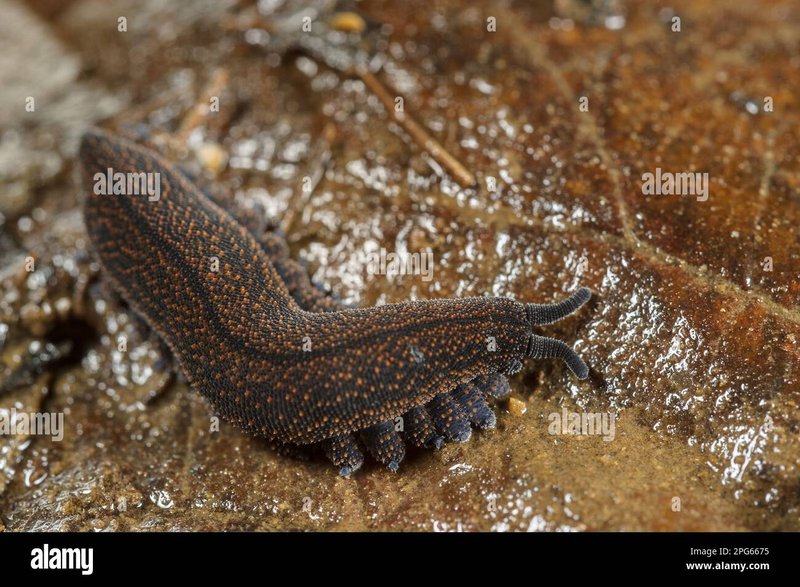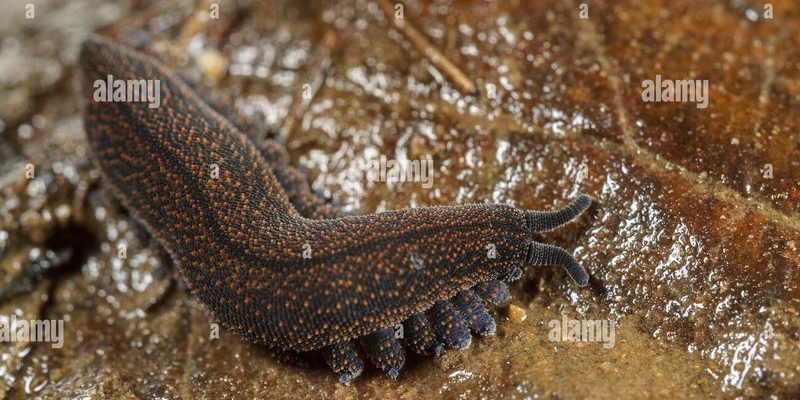
These critters play an important role in the ecosystem, feeding on small insects and helping to decompose plant materials. Understanding what environment they thrive in can give us insight into their behavior and ecological role. So, let’s dive into the world of velvet worms and explore this question together.
What Are Velvet Worms?
Velvet worms, or *Onychophora* if you want to get technical, are captivating animals that live in humid environments, primarily in tropical and subtropical regions. They resemble a mix between an earthworm and a caterpillar, with a soft, velvety body covered in tiny hair-like structures. You might be wondering why these creatures matter. Well, they’re fascinating not just because of their looks but also due to their unique adaptations.
These little guys can grow anywhere from a few inches to more than a foot long, depending on the species. They have a fascinating hunting technique—they shoot a sticky slime to catch their prey. It’s like a mini superhero move for catching insects, showcasing their amazing evolutionary tactics. But what’s even more intriguing is where they prefer to hang out.
Why Habitat Matters for Velvet Worms
When we talk about habitat, we’re discussing more than just a home; we’re looking at how that environment supports life. For velvet worms, their habitat is crucial for several reasons:
1. **Moisture**: Velvet worms thrive in damp environments because they can easily dry out. Think of humidity acting like a cozy blanket that keeps them comfortable.
2. **Food Sources**: Their diet mainly consists of small insects, so they need an environment that supports these food sources—like decaying wood or leaf litter.
3. **Protection**: Sheltered spots allow them to hide from predators. This is important for their survival as they are pretty much at the bottom of the food chain.
With these factors in mind, we can start to see why decaying wood and fresh leaf litter might appeal to these peculiar little creatures.
Decaying Wood: A Velvet Worm Haven?
Decaying wood might seem like an odd choice for any critter, but for velvet worms, it’s like a smorgasbord. Here’s why:
– **Rich Microhabitats**: As wood decomposes, it creates a microhabitat filled with nutrients. It’s like turning on a buffet for worms, with plenty of tiny bugs to munch on.
– **Moisture Retention**: Decaying wood holds moisture very well, allowing velvet worms to stay hydrated without much effort. It’s like living in a humid spa for these little guys.
– **Hiding Spots**: The cracks and crevices in decaying wood offer plenty of places to hide. This protective space is essential, especially for juvenile worms, who need all the safety they can get.
So, if you’re a velvet worm looking for a cozy home, decaying wood sounds pretty attractive!
Fresh Leaf Litter: The Other Option
Now, let’s consider fresh leaf litter. While it doesn’t have the same decomposition benefits as decaying wood, it still offers some perks:
– **Immediate Coverage**: Fresh leaves can fall quickly and form a protective layer on the ground. This can provide a quick habitat for worms if they need to relocate.
– **Nutrient-Rich**: Even though it’s not broken down yet, fresh leaf litter can still harbor insects and small critters. This means food isn’t too far away.
– **Temperature Regulation**: Leaf litter helps regulate temperature by shading the soil and protecting it from direct sunlight. This is vital for creatures like velvet worms who thrive in cooler, moist areas.
But while fresh leaf litter has its benefits, does it stack up against decaying wood?
What Research Says About Their Preferences
Studies on velvet worms show that they indeed have a marked preference when it comes to their environment. Many researchers observed that these worms tend to be found more often in areas with decaying wood than in fresh leaf litter. Here are a few reasons why:
1. **Higher Abundance of Insects**: Decaying wood typically harbors a greater number of prey insects, making it a prime dining area.
2. **Consistent Humidity**: Unlike fresh leaf litter, decaying wood maintains a more stable moisture level, which is critical since velvet worms are sensitive to drying out.
3. **Predation Risks**: Fresh leaf litter doesn’t provide the same level of safety that decaying wood does. Velvet worms need to avoid larger predators, and decaying wood offers better camouflage and protection.
Overall, it seems that the cozy, moist environment of decaying wood outweighs what fresh leaf litter can provide.
Comparing the Two Habitats
Let’s break down a quick comparison to make this clearer:
| Feature | Decaying Wood | Fresh Leaf Litter |
|---|---|---|
| Moisture | Excellent retention | Variable |
| Food Availability | High (many insects) | Moderate (fewer insects) |
| Protection | Numerous hiding places | Less effective |
From this comparison, it’s clear that **decaying wood** is the better choice for velvet worms. They just find more benefits in that environment than in fresh leaf litter.
So, to answer the original question—**do velvet worms prefer decaying wood or fresh leaf litter?** It seems like they have a clear favorite: decaying wood wins. This habitat provides them with moisture, food, and protection.
Next time you’re out exploring nature, keep an eye out for decaying logs or stumps. You might just spot these quirky little creatures enjoying their damp, cozy homes. Understanding these preferences not only enriches our knowledge of velvet worms but also highlights the importance of conserving their habitats. Every little piece counts when it comes to keeping our ecosystems healthy and balanced.

